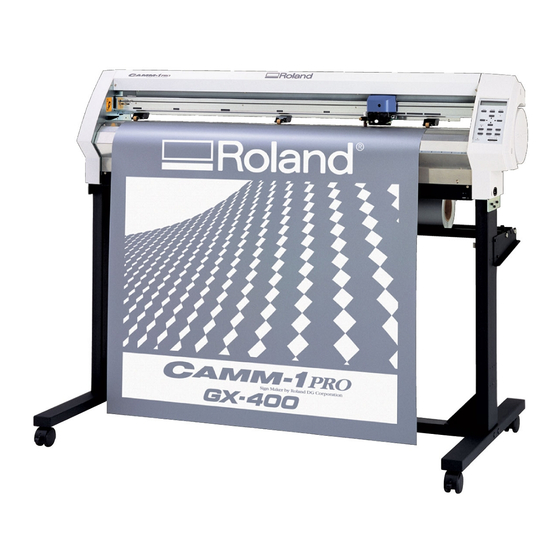Table of Contents
Advertisement
Thank you very much for purchasing the GX-500/400/300.
•
To ensure correct and safe usage with a full understanding of this product's
performance, please be sure to read through this manual completely and store
it in a safe location.
•
Unauthorized copying or transferral, in whole or in part, of this manual is
prohibited.
•
The contents of this operation manual and the specifications of this product
are subject to change without notice.
•
The operation manual and the product have been prepared and tested as much
as possible. If you find any misprint or error, please inform us.
•
Roland DG Corp. assumes no responsibility for any direct or indirect loss or
damage which may occur through use of this product, regardless of any failure
to perform on the part of this product.
•
Roland DG Corp. assumes no responsibility for any direct or indirect loss or
damage which may occur with respect to any article made using this product.
Advertisement
Table of Contents


















Need help?
Do you have a question about the Camm-1 Pro GX-500 and is the answer not in the manual?
Questions and answers
Ao mandar do pc para impressora dá erro na impressora
Errors when sending a print job to the Roland Camm-1 Pro GX-500 can be caused by the following:
1. Instruction Set Differences – If the instruction set is different, completely different instructions may be sent, leading to errors.
2. Incorrect Output Origin Settings – The output origin point and other settings need to be correctly configured in the software.
3. Pinch Roller Positioning – If the pinch rollers are not correctly placed, a "BAD POSITION" error may appear.
4. Material Loading Issues – If the material is not positioned correctly above the sheet sensor, a "SHEET UNLOADED" error may occur.
5. Excess Load on Motor – If thick material is used or improper cutting conditions are set, a "MOTOR ERROR" may be displayed.
6. Driver Issues – If the printer driver is not installed correctly or needs to be uninstalled and reinstalled, errors may happen.
7. USB Connection Problems – If the USB cable is not properly connected or the device is not recognized, the print job may fail.
Proper setup and troubleshooting of these issues can help prevent errors when sending a print job.
This answer is automatically generated